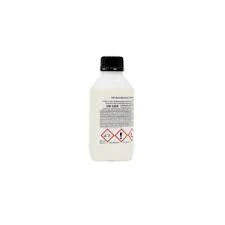coagulant flocculant
Understanding Coagulants and Flocculants Their Role in Water Treatment
Water treatment is a crucial process in ensuring safe and clean water for various purposes, including drinking, industrial applications, and agricultural use. Among the key components in the water treatment process are coagulants and flocculants. Although often mentioned together, these two substances serve distinct roles, and understanding their functions is essential for effective water purification.
Coagulants The First Step in Water Clarification
Coagulants are chemical agents that facilitate the aggregation of suspended particles in water. When water contains fine particles such as silt, clay, and algal blooms, it can appear cloudy and unappealing. To address this issue, coagulants are added to the water. Common coagulants include aluminum sulfate (alum), ferric sulfate, and polyaluminum chloride.
These substances work by neutralizing the charges of the suspended particles. In natural water bodies, particles often carry a negative charge, which causes them to repel each other and remain suspended. When coagulants are introduced, they neutralize these charges, allowing the particles to come together and form larger aggregates. This process, known as coagulation, is typically followed by flocculation, which will be discussed later.
Coagulation is influenced by several factors, including pH and temperature. Therefore, it is vital to monitor and adjust these parameters to optimize the coagulation process. Too much or too little coagulant can lead to ineffective treatment and residual chemicals in the treated water.
Flocculants Enhancing Particle Aggregation
coagulant flocculant

Once coagulation has taken place, the next step is flocculation. Flocculants are long-chain polymers that promote the agglomeration of the particles into larger clusters called flocs. These flocs are easier to remove from the water during subsequent treatment stages, such as sedimentation and filtration.
Flocculants typically come in two forms synthetic and natural. Synthetic flocculants, such as polyacrylamide, are often preferred due to their efficiency and ability to function in various pH levels. Natural flocculants, like guar gum and starch derivatives, are increasingly being used due to their biodegradable properties, making them more environmentally friendly options.
The flocculation process usually involves gentle mixing of the water to ensure that the flocs form without breaking apart. The size and density of the flocs can be controlled by adjusting the concentration and type of flocculant used. A well-optimized flocculation process significantly improves the clarity of the water and enhances the efficiency of downstream treatment processes.
The Importance of Coagulant and Flocculant Selection
Choosing the right coagulant and flocculant is critical for the effectiveness of the water treatment process. Factors such as water chemistry, particle size distribution, and treatment goals should all be considered. Additionally, regulatory standards and environmental implications should guide the selection of appropriate chemicals.
In conclusion, coagulants and flocculants play vital roles in the water treatment process. By working together, they help to clarify water, making it safe for consumption and use. Understanding their distinct functions and how to effectively implement them can lead to more efficient and sustainable water treatment practices—crucial for managing our most precious resource in an increasingly water-scarce world.
-
Water Treatment with Flocculant Water TreatmentNewsJun.12,2025
-
Polymaleic AnhydrideNewsJun.12,2025
-
Polyaspartic AcidNewsJun.12,2025
-
Enhance Industrial Processes with IsothiazolinonesNewsJun.12,2025
-
Enhance Industrial Processes with PBTCA SolutionsNewsJun.12,2025
-
Dodecyldimethylbenzylammonium Chloride SolutionsNewsJun.12,2025





